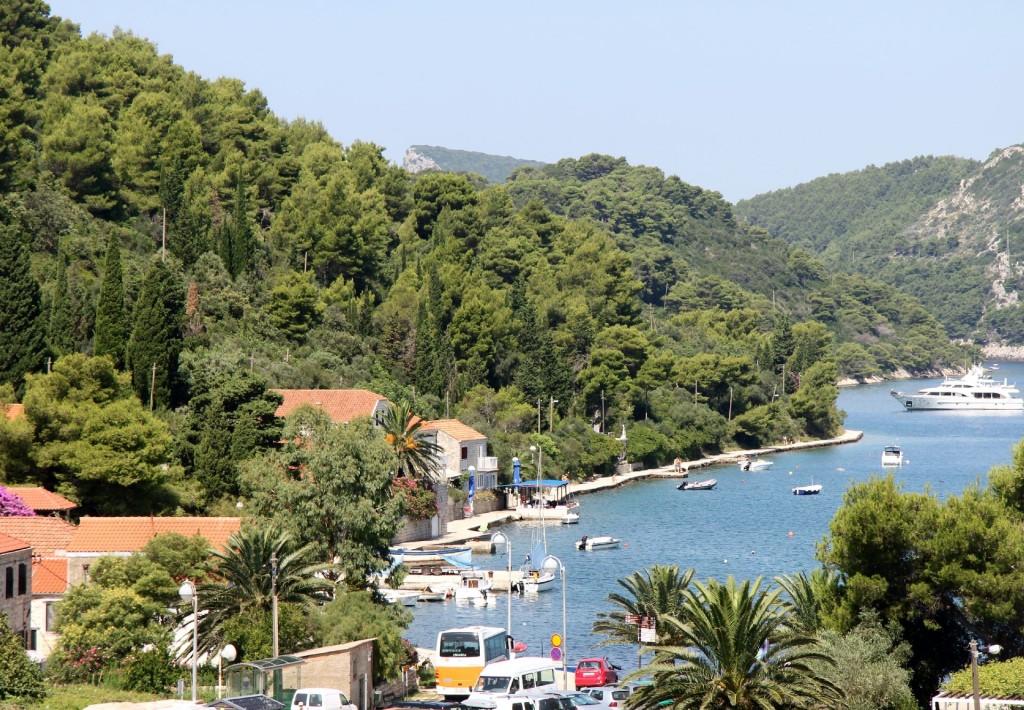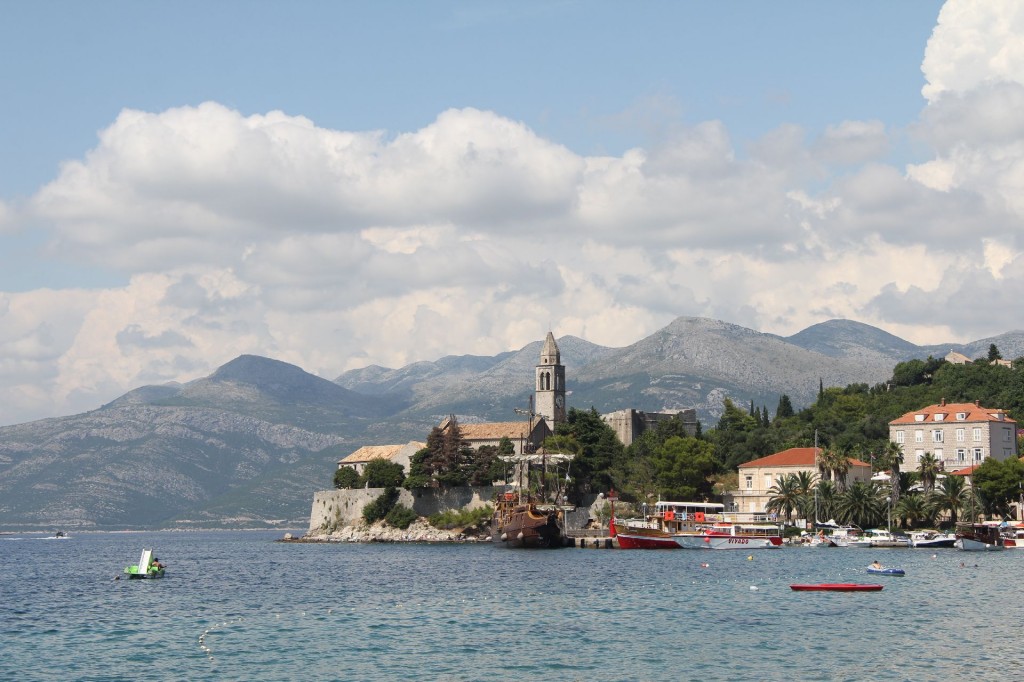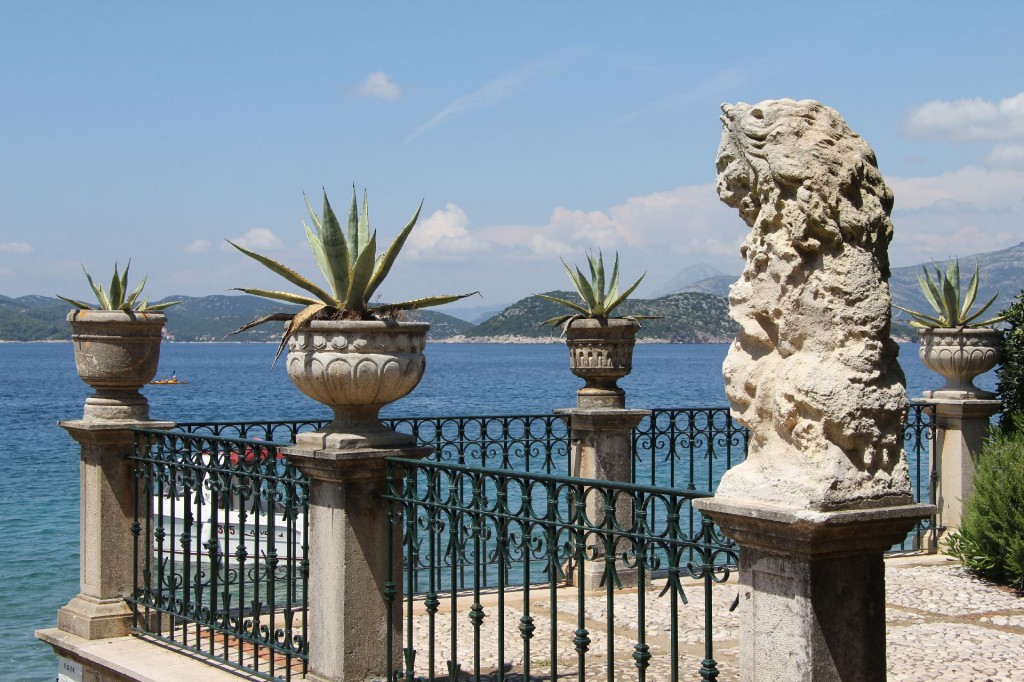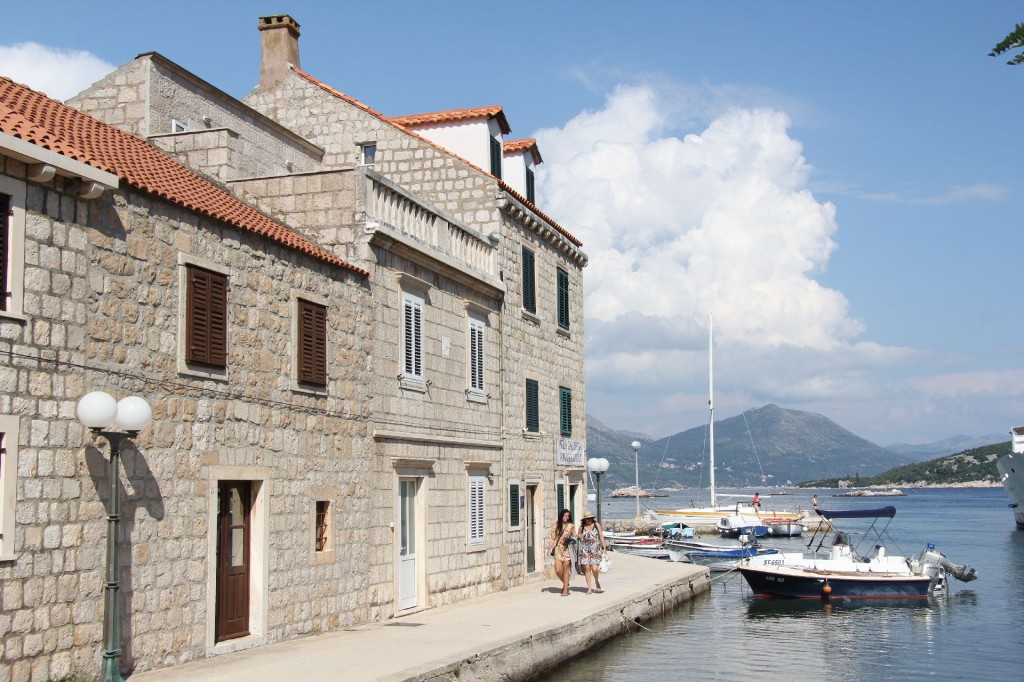 When you are spending your holidays on the Dubrovnik Riviera, a boat tour to the Elaphiti Islands – a small archipelago stretching northwest of Dubrovnik – is a “must”. We booked a day trip from Slano with a visit to Šipan and Lopud, two of the three permanently inhabited islands. Of course, it is easier to take one of the regular ferries leaving from Dubrovnik on a daily basis.The archipelago consists of thirteen islands with a total land area of around 30 square kilometers and a population of 850 inhabitants. The hilly islands have characteristic Mediterranean evergreen vegetation with dense forests. The name comes from the Ancient Greek word for deer (elaphos), which used to inhabit the islands in large numbers. The Roman author Pliny the Elder was the first to mention the Elaphiti Islands – or Deer Islands – in his work Naturalis Historia in the 1st century.
When you are spending your holidays on the Dubrovnik Riviera, a boat tour to the Elaphiti Islands – a small archipelago stretching northwest of Dubrovnik – is a “must”. We booked a day trip from Slano with a visit to Šipan and Lopud, two of the three permanently inhabited islands. Of course, it is easier to take one of the regular ferries leaving from Dubrovnik on a daily basis.The archipelago consists of thirteen islands with a total land area of around 30 square kilometers and a population of 850 inhabitants. The hilly islands have characteristic Mediterranean evergreen vegetation with dense forests. The name comes from the Ancient Greek word for deer (elaphos), which used to inhabit the islands in large numbers. The Roman author Pliny the Elder was the first to mention the Elaphiti Islands – or Deer Islands – in his work Naturalis Historia in the 1st century.
 The boat took us through the Bay of Slano and soon we approached the beautiful green islands of Jakljan and Šipan. Šipan is also called “Golden Island”, as many aristocratic manor houses were built here in the time of the Dubrovnik Republic.
The boat took us through the Bay of Slano and soon we approached the beautiful green islands of Jakljan and Šipan. Šipan is also called “Golden Island”, as many aristocratic manor houses were built here in the time of the Dubrovnik Republic.
We had a break in Šipanska Luka, one of the two fishing ports on the island. The sleepy village consists of old crumbled stone houses, a church with a nice view (photo 2) and a picturesque harbor with several restaurants and pubs. A quiet place, probably because there are no sandy beaches. However, although we did not have time to go around, it was clear that the beautiful rocky coastline represents a special attraction for kayakers. Some of them were exploring a picturesque cave in the surroundings (photo 1). It was a pity that we could not take a walk on one of the well-marked trails on the island. Maybe another time!
 The boat tour continued along the rocky cliffs on the back side of Šipan (photo 3) and the next stop was in Lopud (photo 4), the second island in size and best known for its sandy beaches. Although this is a car-free island, tourism appeared to be well-developed here, with a big hotel and many charming restaurants and pubs dotting the seafront and overlooking the small beaches. The harbor was full of yachts, motor boats and kayaks. After spending an hour or so on the beach and enjoying the clear sea water, we visited the Arboretum passing through an old gate flanked by stone lions (photo 5). It was nice and cool, quiet and perfectly maintained. Unfortunately, we did not have enough time to visit the Šunj beach on the other side of the island and the fortress on the top of the hill.
The boat tour continued along the rocky cliffs on the back side of Šipan (photo 3) and the next stop was in Lopud (photo 4), the second island in size and best known for its sandy beaches. Although this is a car-free island, tourism appeared to be well-developed here, with a big hotel and many charming restaurants and pubs dotting the seafront and overlooking the small beaches. The harbor was full of yachts, motor boats and kayaks. After spending an hour or so on the beach and enjoying the clear sea water, we visited the Arboretum passing through an old gate flanked by stone lions (photo 5). It was nice and cool, quiet and perfectly maintained. Unfortunately, we did not have enough time to visit the Šunj beach on the other side of the island and the fortress on the top of the hill.
 Finally, we visited Suđurađ, on the other side of the Šipan island. This place is connected with Dubrovnik by a daily ferry and that it is why it is rather crowded. But anyhow, it is a charming fishing village with an old fortress and beautiful old houses around the harbor (photo 6).
Finally, we visited Suđurađ, on the other side of the Šipan island. This place is connected with Dubrovnik by a daily ferry and that it is why it is rather crowded. But anyhow, it is a charming fishing village with an old fortress and beautiful old houses around the harbor (photo 6).
Altogether, it was an interesting tour. First of all, I was surprised to see that sea kayaking has become a new active tourism trend in Croatia. Moreover, I discovered that much money is invested in the reconstruction of old manors, fortresses and churches in all villages we visited and this is certainly positive for tourism development, in particular as it is obviously prohibited to build “modern” houses or high-rise buildings. In my opinion, this is the right way to develop tourism!

